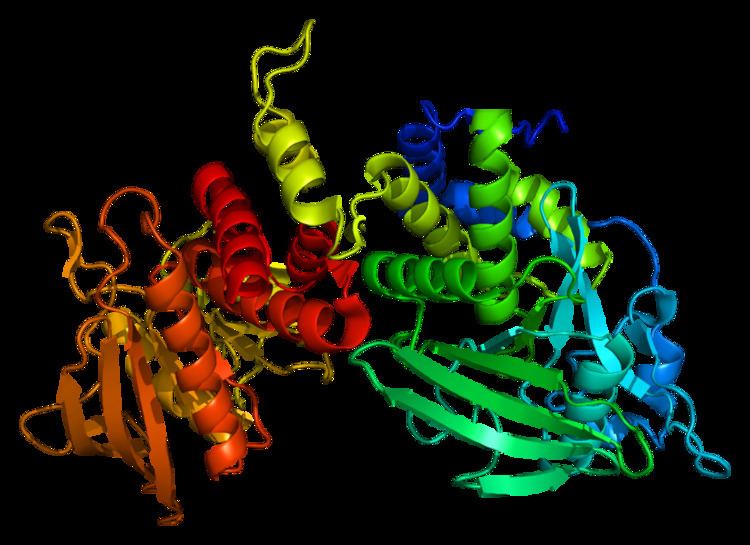Entrez 5802 | Ensembl ENSG00000105426 | |
 | ||
Aliases PTPRS, PTPSIGMA, protein tyrosine phosphatase, receptor type S, R-PTP-S, R-PTP-sigma External IDs MGI: 97815 HomoloGene: 20626 GeneCards: PTPRS | ||
Receptor-type tyrosine-protein phosphatase S, also known as R-PTP-S, R-PTP-sigma, or PTPσ, is an enzyme that in humans is encoded by the PTPRS gene.
Contents
Function
The protein encoded by this gene is a member of the protein tyrosine phosphatase (PTP) family. PTPs are known to be signaling molecules that regulate a variety of cellular processes including cell growth, differentiation, mitotic cycle, and oncogenic transformation. This PTP contains an extracellular region, a single transmembrane segment and two tandem intracytoplasmic catalytic domains, and thus represents a receptor-type PTP. The extracellular region of this protein is composed of multiple Ig-like and fibronectin type III-like domains. Studies of the similar gene in mice suggested that this PTP may be involved in cell-cell interaction, primary axonogenesis, and axon guidance during embryogenesis. This PTP has been also implicated in the molecular control of adult nerve repair. Four alternatively spliced transcript variants, which encode distinct proteins, have been reported.
Clinical significance
A PTPRS protein mimetic may improve muscular and bladder control in rats with spinal cord injuries.
Interactions
PTPRS has been shown to interact with:
